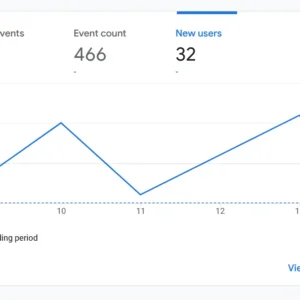Blog posts
Rebuilding a Divi website with a custom Block Theme
Introduction Before the 4th of July 2024, my website (yes, this one) exclusively used the popular WordPress theme Divi. You can read more about this build here. I’ve had a love-hate relationship with Divi over the years. When I was first learning the ropes of WordPress, I found Divi to be an excellent tool to […]
YouTube API with Laravel & Guzzle Http
I felt that my minimal, PHP YouTube client was worth sharing. If you’re looking to do something similar, interacting with the YouTube API via PHP, then look no further.
Add a Honeypot to Livewire Volt Forms
What are Livewire and Volt? Livewire allows you to build ‘Powerful, dynamic, front-end UIs without leaving PHP’. For me, as a PHP fanboy, it’s quickly becoming my bread and butter for creating reactive components all within the comfort of my own backyard. Livewire Volt is a package you can use on top of Livewire, described […]
Hermitclock development, May 2024
Following on from my recent post covering the success of hermitclock.com, I’ve decided I’d like to keep a record of the work I’m doing on the website. This will showcase the work that’s been carried out, as well as upcoming features that I have planned. Without further ado, let’s jump in! What’s new? Hermitclock has […]
The Success of Hermitclock’s Launch
For those who don’t know, Hermitclock is my latest side project. It’s a website which shows the live, local times for all of the active Hermitcraft members. Hermitcraft is a Minecraft, multiplayer survival server on which only a select group of players (often called Hermits) can play. All of the active Hermits are content creators, […]
How to block WordPress comment spam with Cloudflare
A little while ago I wrote a post titled ‘How to block Contact Form 7 spam with Cloudflare‘. This explained how I use Cloudflare’s WAF rules to prevent any spam form submissions coming through with the popular Contact Form 7 plugin for WordPress. Even if you don’t use Contact Form 7, I’d highly encourage you […]
Using Google Analytics on my blog after 3 years
In my experience within the web development industry, Google Analytics is the go-to solution for monitoring the effectiveness of a website, and for optimising the content. Being able to audit and track not only the sources of your traffic but also the way your users interact with your website, is invaluable information for those willing […]
Dnsmasq Domain Resolution with Docker Compose
Dnsmasq resolves a subtle, but real problem that becomes apparent when adopting Docker Compose as a LAMP stack. By allowing containers to resolve requests to each other with custom domain names, you can ensure that all containers can…
Local PHP development with Docker Compose
Introduction This post will cover how I host local copies of PHP websites running WordPress and Laravel with Docker Compose. This removes the need to install PHP, Composer, Nginx/Apache, MySQL, NPM/Node, etc locally on your host machine. I run my local development environments within Docker to avoid bloating my system. This means all of the […]
Automatically update Pypi on GitHub release
Introduction This article will guide you through setting up a GitHub workflow that automatically updates your PYPI package upon a new GitHub release, using my zomboid_rcon repository as a practical example. Understanding the Workflow The process involves a GitHub workflow specifically designed to upload a Python package to PYPI when a new release is published. […]










